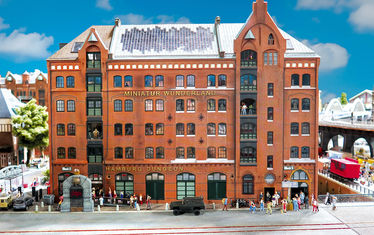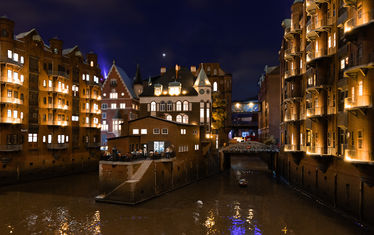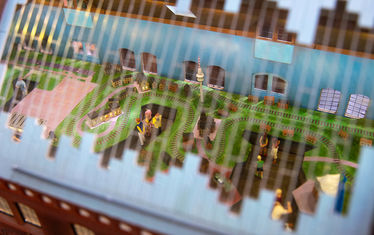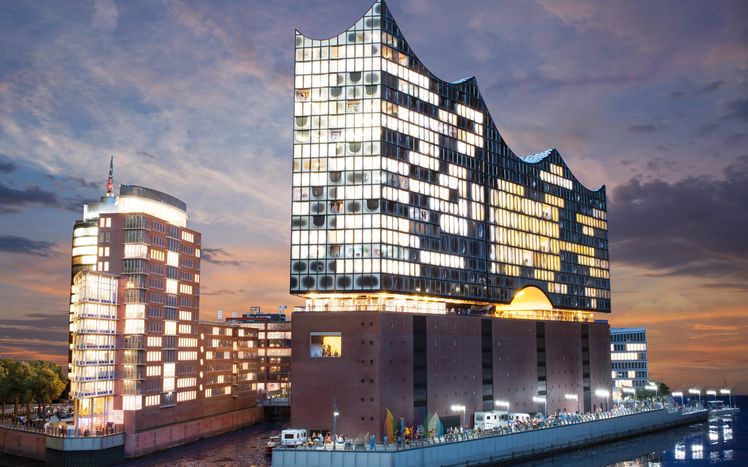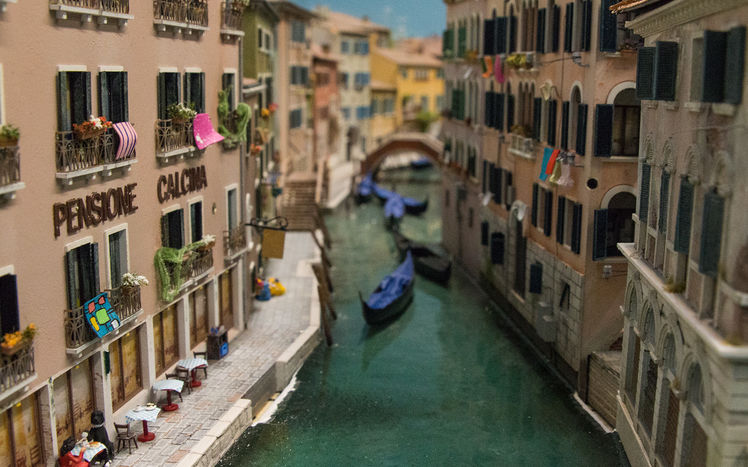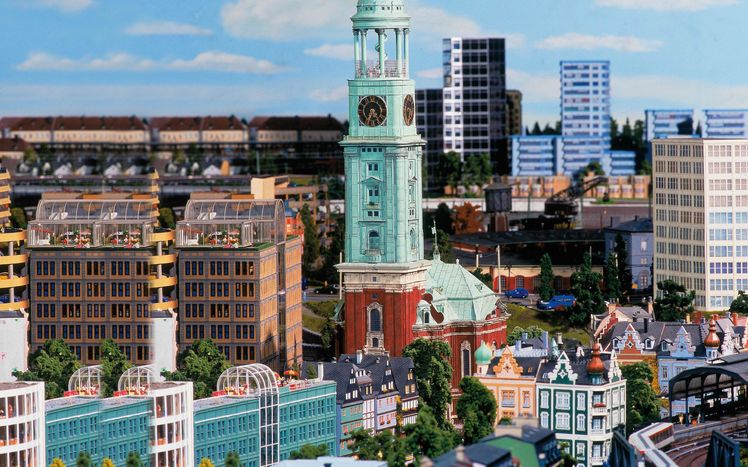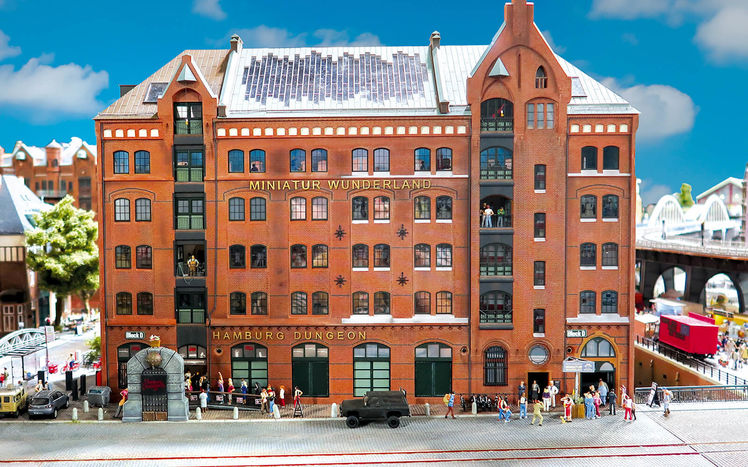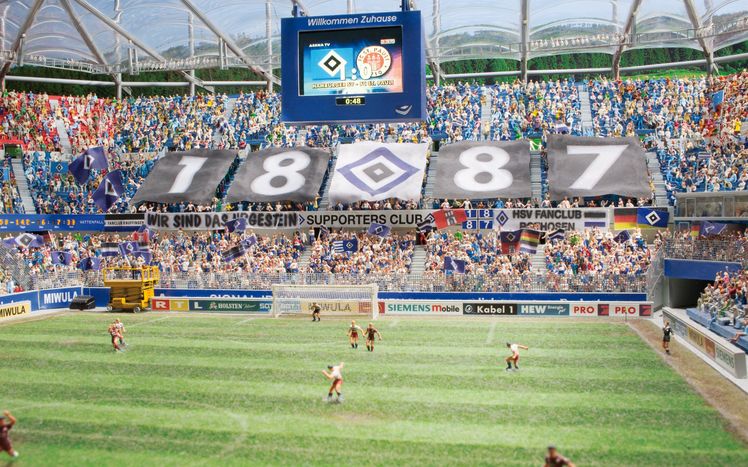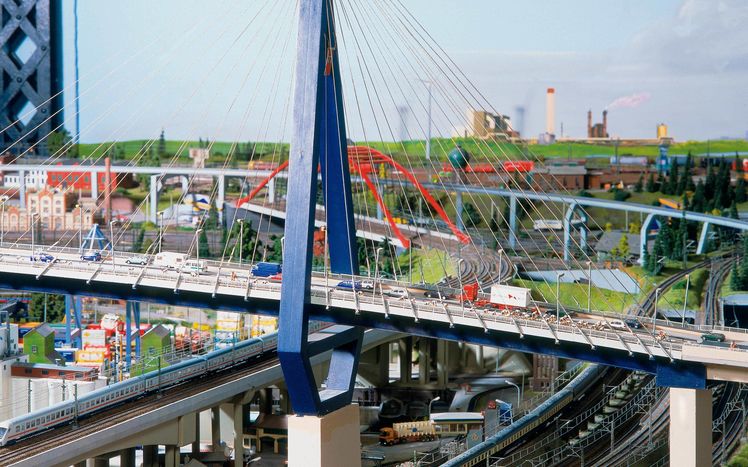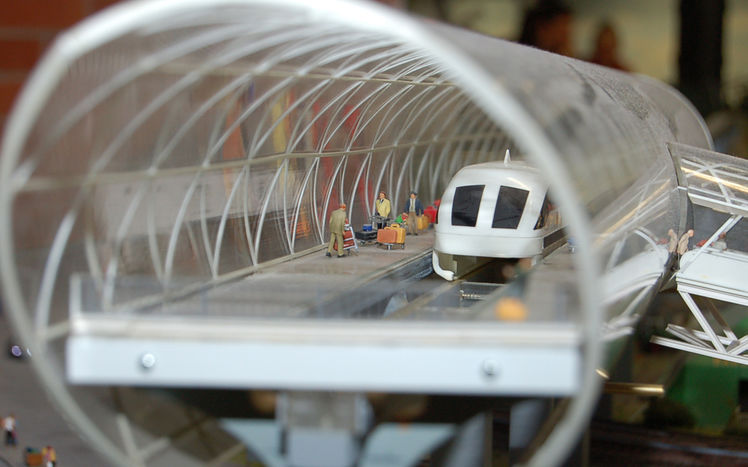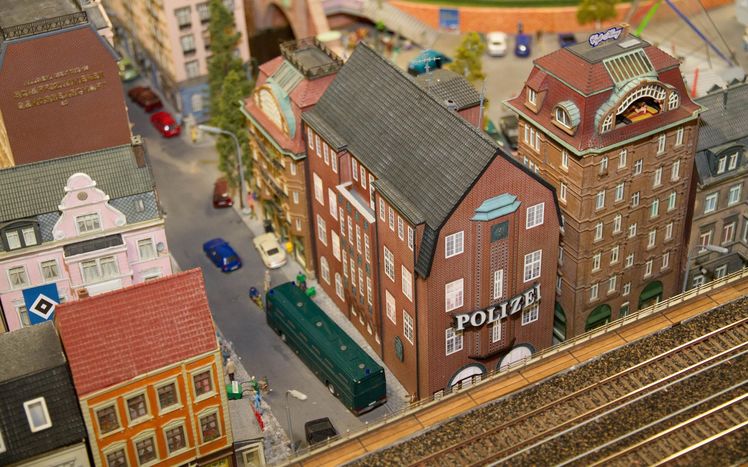
Speicherstadt
The Speicherstadt is home to a very special attraction: the "model railroad in the model railroad".
After 20 years, we were saying goodbye to the previous Speicherstadt and completely rebuilt it, taking the level of detail of the model to the extreme! The Wunderland within the Wunderland must not be missing: If you want to discover the Speicherstadt buildings in the small model, you have to look very closely through the window - it has been shrunk to a scale of 1:7569!
The Speicherstadt is not only the home of Wunderland, but has also been part of the miniature worlds of the Hamburg section for 20 years. This makes it one of the oldest buildings ever created in Wunderland and holds a special place in our heart. Our model building team has set itself the task of completely rebuilding the Speicherstadt true to the original. In the past, we bought components that were cut to size and assembled. As a result, a few details got lost. However, these are essential to the charm of the Speicherstadt, which is why every detail in the miniature version needed to be remodelled exactly as in reality. In order to achieve this, every single component has been precisely recreated by our model makers and built from scratch.
After more than a year of construction, around 5,000 individual parts and 803 LEDs later, the time has come in September 2023: the new Speicherstadt in our Hamburg section is finished, installed and open. In order to capture the charm of the Speicherstadt, attention was paid to every detail, such as all the blue and yellow clinker bricks and glass elements in the brick composite. Even the black patterns on the warehouses have been painted on. All the joints in the bricks were carved, so that around 750,000 bricks are recognizable. The Wasserschloss is a famous Hamburg photo motif and brings the atmosphere of the Speicherstadt to Wunderland.
Wunderland can be seen as a miniature version in the visible roof construction. There you can see the special attraction "the model railroad in the model railroad", which is home to the smallest railroad in the world and, at the push of a button, it turns its lively rounds in the world's largest model railroad. Just like in reality, there is a day and night rhythm.
The true original was built at the end of the 19th century on Hamburg's Brook Island. South of the customs canal, a new storage area (the Speicherstadt) was built for Hamburg's free port. The Speicherstadt is the largest warehouse ensemble in the world and forms an impressive unity with its seven-storey brick buildings. Most of the warehouses were and still are used to store various goods.
